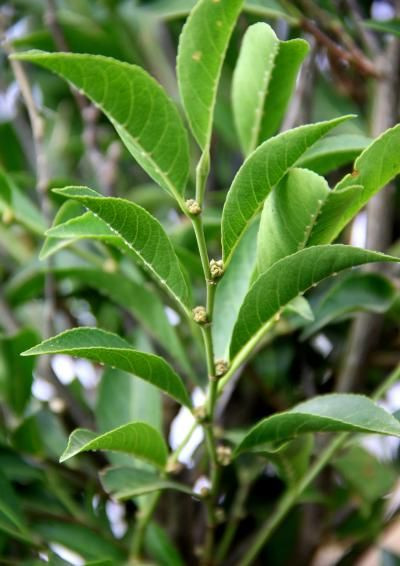New Species Of Metal-Eating Plant Has ‘Great Potential’ For Green Technology

A plant species that “eats” metal was recently discovered in the Philippines, and scientists who identified the iron-stomached plant say it could help clean up the environment.
According to scientists at the University of the Philippines, Los Baños, who published a report about the metal-eating plant in the journal PhytoKeys on Friday, Rinorea niccolifera absorbs and stores up to 18,000 parts per million of nickel in its leaves without being poisoned. That’s about 1,000 times more metal than is present in most other plants.
"Hyperacccumulator plants have great potentials for the development of green technologies,” Augustine Doronila of the University of Melbourne, a co-author of the report, said in a statement. Doronila noted the value of Rinorea niccolifera for uses like phytoremediation (using plants to remove contaminants from the environment) and phytomining (employing plants in the recovery of valuable metals.)
Rinorea niccolifera was found on the western part of Luzon Island in an area known for its metal-rich soil.
Only about 0.5 to 1 percent of plants have the ability to absorb metal. According to National Geographic, there are around 350 known species of plants that accumulate metals such as nickel, zinc, copper and manganese in high concentrations.
Hyperaccumulating plants store the metal in vacuoles – microscopic structures in their cells. Vacuoles have membranes similar to those in the human liver that protect the rest of the cell from the toxic effects of the metal.
"[Metal-eating plants] have this extraordinary capacity to accumulate metals, and they do this in the wild without any interference from man,” David E. Salt, associate professor of plant molecular physiology at Purdue University, told National Geographic in 2001. “They just do this for a living."
Salt led a team that cloned the genes that allow hyperaccumulator plants to store high concentrations of metals. Their findings could lead to new crop plants that can clean up industrial contamination and allow for improved crop nutrition.
Researchers have been experimenting with metal-eating plants for some time now. The goal is to see if crop plants could clean up soil by absorbing heavy metals.
Metal-absorbing plants also have implications for mining industries. The process works by first locating soils that contain high levels of a particular metal, and then growing plants that absorb that metal through their roots and store them in their leaves. The metal can then be recovered, or harvested, from the leaves by burning the plants and processing the ash in a smelter or refinery, according to Gizmodo.
The trick will be finding plants whose ability to take up metal is so strong as to be economically viable.
Scientists aren’t sure exactly why some plants absorb much more metal, but they believe it could be a kind of defense mechanism to keep animals from eating them.
“Just as people hate to bite down on a piece of aluminum foil, insects tend to avoid eating plants that taste like metal,” National Geographic noted.
© Copyright IBTimes 2025. All rights reserved.






















